#victorian history
Text

1850-1855 Silk Evening Dress.
#historical fashion#fashion#historical#history#historical clothing#historical dress#long dress#victorian#textiles#victorian era#evening dress#evening gown#high fashion#old fashioned#fashion dress#1850s#1850s dress#1800 dress#1800s dress#1800s fashion#1800s#19th century fashion#19th century#victorian fashion#victorian pattern#victorian history#victorian dress#historical costuming#historical costume
56 notes
·
View notes
Text

I love them and wish them all the happiness in the world
868 notes
·
View notes
Text
Sucking Gangrene Out of a Wound
So last year, there was this feeling of incredulousness about Van Helsing's little story about how Jack saved his life! People had heard of sucking poison out of a wound, but actual gangrene? Jack must have used medical equipment right? He didn't actually use his mouth, RIGHT??
Unfortunately for all of you lovely readers, not only didJack suck the "gangrenous blood" from Van Helsing using his mouth , but its very likely Bram Stoker really did mean it in earnest! Because SCIENCE. Those sciencifically minded bros were SO OPEN MINDED!!
I had the unfortunate displeasure of reading excerpts from this book on Victorian medical history, about all the ways doctors and surgeons had to be incredibly quick thinking and open minded as to not, y'know, kill their patients. One of the famous examples given is of Eric Erichsen, chief surgeon at London's University College Hospital, who used his mouth to suck out infectious blockage from a woman's throat. Yup you heard that right! HIS MOUTH.
Literally, a woman came in for surgery because she had a blocked larynx, most likely laryngitis that had gone on way too long. And during surgery Erichsen realized even though he cut through her throat, the offending material was difficult to get out. So he just used his God give mouth and OH MY GOD GROSS. Anyway, she survived the operation??? He died when he was 78 so this operation didn't impact his health AT ALL??? Yeah.
So anway....yeah. Do I think Bram Stoker knew of this case? No, although three of his brothers were medical doctors. People have also suggested Thornley Stoker was the direct inspiration for Van Helsing because of implied spoilers. But I think he had heard of enough similar tales of surgery gone wrong that it doesn't seem too out of place.
Of course that's not even touching the thematic and symbolic importance of blood sucking in a novel all about Blood Sucking....Either way, yes it would have been entirely possible for Jack to really save Van Helsing's life from succumbing to gangrene. Everyone say Thank You Jack!
#dracula (novel)#victorian history#medical history#jack seward#john seward#abraham van helsing#gangrene#thebibi on vampirez
549 notes
·
View notes
Text
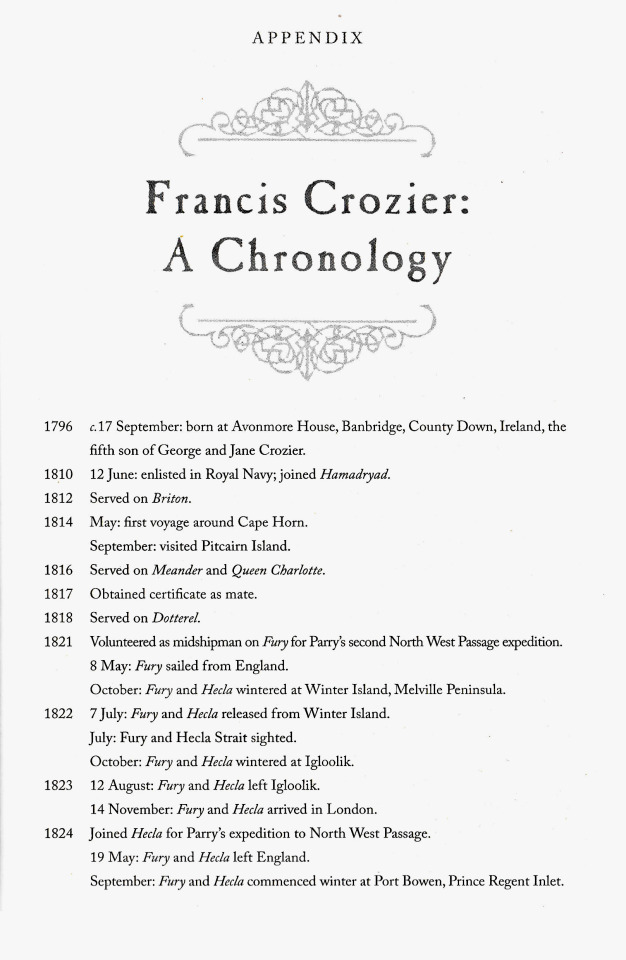

Captain Francis Crozier Life Events
(SOURCE: Icebound in the Arctic by Michael Smith)
#franklin expedition#polar exploration#francis crozier#irish explorers#irish history#british history#naval history#victorian history#icebound in the arctic#michael smith
93 notes
·
View notes
Text
Why 18th-Century Queer History Matters
[homophobia cw]
I learned early on that that sex worker and LGBTQ+ rights are linked, but as usual, I didn't realize how far back that history stretched.
It is poignant to learn we have always seen each other as community. This article is about the queer community building social spaces for themselves in 18th-century England. The queer community and sex workers naturally gravitated to each other. We were all criminalized for a reason.
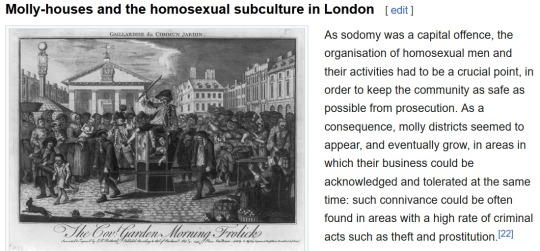
I think of the fight against FOSTA-SESTA (2018); Sylvia Rivera and Marsha P Johnson founding and maintaining STAR with earnings from sex work (1970); and seeking each other out to form a safe space in the 1700s. That's over 300 years of solidarity.
The reasons we were arm in arm 300 years ago haven't changed much. How similar does this - 17 raids from 1726-27 in England - sound to the raids that were regular occurrences in NYC in the 1960s, 200+ years later? How similar does this sound to where we might be going?

The other thing I take away from this: The more I learn, the more I realize I was denied in history class. Queer-only spaces were common enough to be their own category in 1709. 1709! I never want to hear anyone imply we sprang into existence in 1969 ever again.

Ending this post with this quote on found family. Do you ever cry thinking about our queer ancestors who built community in a society that wanted to legislate them out of existence? I do.

Sources:
Homosexuality in 18th Cent. England (cited in the Wikipedia article on Molly houses)
18th Century Molly Houses – London’s Gay Subculture
Sylvia Rivera, Marsha P Johnson, & STAR
#queer history#18th century#queer rights#sex worker rights#queer tag#victorian history#unnecessary's stuff#apologies for the dramatic title#it was the best i could come up with#i really really love the queer community#if you thought to yourself: did tree go down a research rabbit hole about the terror (2018)#you would be correct
444 notes
·
View notes
Text

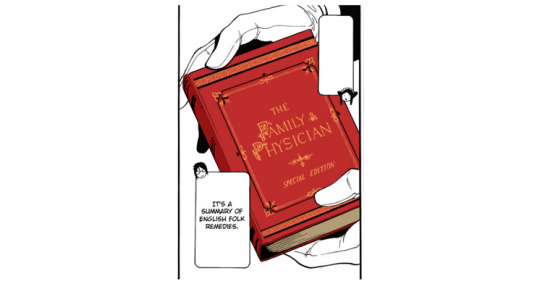

In the Green Witch arc, Sebastian presents a rather interesting book to Sieglinde when she requests to have something to read. The book is called The Family Physician, and it is in fact replicating a real medicinal work of the Victorian era.
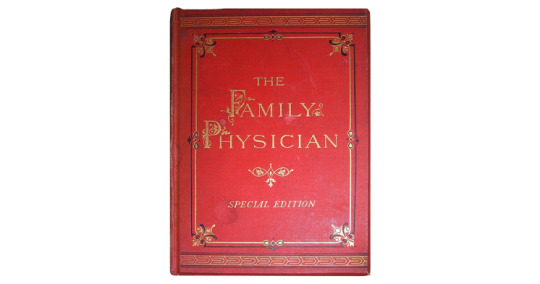
The Family Physician: A Manual Of Domestic Medicine was published in London, England, by Cassell & Company in the year 1883. It is one of many books of this kind as at the time family manuals of medicine were becoming more and more popular. Of course, books were still rather expensive to print and were majorly available to the rich.
As many were living in estates outside of the city centers and some traveled abroad, physicians were not always readily available. With that, more and more rich Victorians would rather have a book of medicinal remedies at home to "replace" a visit from a doctor.
The book Sebastian is showing in the arc is one of the later editions by the physicians of the London hospitals. The special edition Family Physician featured in the manga consists of four volumes and includes a diverse list of treatments for many types of illnesses.

Now, Yana does include two supposed remedies used in that book but only one of them is found on the pages: opium tincture. Laudanum was prescribed for various illnesses. As for the bacon, it is a real medical practice of the Victorian era but one recorded in The Successful Housekeeper (1888), not in this manual.
Sebastian has previously stated that he would get familiar with the medicinal treatment options of the time to assist Ciel with his health problems. We can safely assume that this handbook manual is used by him rather often to help young Lord during his various instances of sickness.

This book consists of multiple categories of illnesses that would take a long time to cover fully, but here are those that Ciel canonically either goes through or is likely to go through due to his known chronic condition (asthma):
Night Terrors
Asthma
Cold
Cough
Fever
The sort of treatment that Sebastian would put Ciel through, were he to truly follow the book, is bizarre.

Do not follow these instructions. They are highly outdated and do not follow any medical requirements. Herbs, plants, and chemicals mentioned in this post are highly toxic and should not be ingested or inhaled.

Night Terrors
Night terrors are recognized by Victorians as recurrent and relatively safe, as they are "rarely precursors of fits or epilepsy", though they may be hard to handle, especially in younger children.
In case that a Victorian child was suffering from nightmares, or night terrors as they equated the two, physicians recommended rhubarb and soda also known as Gregory's powder. Combined with a light and digestible meal, this mixture, which is currently regarded as a laxative, was to ensure that the sleep of the child is undisturbed through the night.

Asthma
During the Victorian era, asthma was not recognized as an obstructive disease of lungs, but rather as a neurological condition. Physicians of the time were seemingly very well-aware that asthma was a difficult and longterm condition even if they did not precisely understand its nature; sometimes referring to it as psychosomatic.
Within the treatments that Ciel would have realistically gotten were he, as a Victorian child, to have the kind of asthma attacks that he has had in the manga are:
I. Tobacco, which was believed to relieve paroxysms - sudden asthma attacks.
The book Sebastian has provided us with says that tobacco would be especially beneficial for non-smokers who have not established tolerance to cigarettes, pipes, and cigars. Even though individuals who used this method would grow "pallid" and "damp with prespiration" after the process, their asthma attack would be "prevented".
It is possible to assume that with the repeated, consistent smoking pattern Victorian asthmatics tried to balance out their breathing rhythm.
II. Lobelia inflata, also known as puke weed, is another type of tobacco recommended for asthma, though this time it is to be consumed by ingestion in a form of a tincture mixed with water. It was believed that this tobacco helped with asthma "related to indigestion".
The book does state that its authors are unsure whether the plant is very effective as some patients have fallen sick after the use; which is no surprise to the modern reader as lobelia inflata has been discovered to be a toxic plant.

III. Stramonium, also known as thorn-apple, is a kind of medicine recommended by the Victorian physicians when smoking tobacco was not enough.
The leaves of the plant, which is highly toxic due to multiple alkaloids within it, would be crushed and smoked. Smoking stramonium before sleep for prophylactic reasons or at the beginning of an asthma attack was generally considered an effective treatment that worked "like magic".
IV. Cigares de Joy, "anti-asthma" cigarettes created by a Frenchman, are highly regarded by the authors of the book.
Like many other medicinal treatments of the Victorian era, they were, of course, bad for your health as they contained stramonium and arsenic.
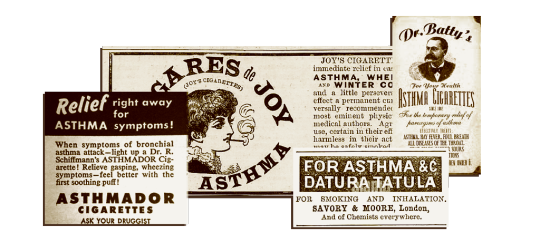
V. Coffee is probably the only non-toxic method of treating asthma that Victorian doctors suggest.
However, even with coffee one can't hope to have much satisfaction from the treatment: it is to be given very hot, black (pure cafe noir), without any milk, and on an empty stomach in small quantities. Bigger dosages are advised against while taking coffee with a meal is cosidered to be a cause of asthma attacks.
VI. Nitre-papers are, practically, papers with potassium nitrate.
The papers were meant to be burned so the fumes fill the room.
The chemical compound of nitre-papers is an irritant and causes damage to the lungs, though Victorian doctors describe multiple cases of children and adults alike "peacefully" falling asleep around ten minutes into the paper burning. The latter is probably no surprise as potassium nitrate fumes have an adverse effect on the human body, causing nausea and dizziness.
VII. Nitrite of amyl is one more nitric chemical compound that is recommended by the Victorian doctors to inhale in order to treat asthma.
Now, this chemical is highly toxic in all forms and especially so in direct inhalation and ingestion; it can cause blindness, brain damage, lung scarring, and death.

VIII. Chloroform is yet another questionable way of managing asthma in the Victorian era.
While the authors of the book can be given credit for mentioning that overdoing chloroform is never the aim, and even provide a story of a man who died doing so, they do still praise the method greatly. According to the manual, chloroform is to be applied in a few drops on a handkerchief one can press to the nose and inhale through.
It is rather clear here that Victorians truly did see asthma as a disturbance within the nervous system and provided methods of sedating the patient.

IX. Ipecacuanha, an imported plant native to Brazil, Costa Rica, Nicaragua, Panama, and Colombia, is a remedy that the authors seem rather perplexed about. They do recommend it as an effective method of asthma treatment but they do not specify how it is to be applied.
We are left wondering how exactly Victorians used this plant. Ipecacuanha, or ipecac as it is known within the medical field now, is highly toxic in all its forms and is especially dangerous to ingest. Brain damage and organ failure are only some side effects of ignoring safety precautions.
X. Potassium iodide is a medication recommended for ingesting directly in the amount of two tablespoons three times a day. Praised for postponing or even fully stopping asthma attacks, this medicinal treatment was highly regarded by the Victorian doctors.
It is worth mentioning that potassium iodide has adverse side effects and is an allergen for many people. However, it is a recognized medical supplement that should be taken only, if ever, upon doctor's prescription.

Cold
Victorians recognized that cold was a rather complicated condition as it could either be a simple cold of a precursor to other, more serious, diseases: bronchitis, pneumonia, quinsy, consumption (tuberculosis), pleurisy, rheumatism, neuralgia, and more.
Doctors seemed to believe that the main cause of a common cold was dampness rather than anything else: a damp bed, a damp seat, a damp house or room, a damp robe, and more. Bathing for a prolonged amount of time was discouraged as it "caused colds".
The physiological nature of a cold was that it was seen as an inflammation of a mucuous membrane within the air-passages.
Victorians recommended that one who has caught a cold should stay quiet and not talk much, not eat too much food though drink plenty of water. The most jarring thing is, they recommend - within the book in Sebastian's possession - that colds are to be immediately treated with an aconite tincture. Needless to say, aconite is toxic in all forms and causes nausea and dizziness, vomiting, heart and lung problems, as well as death.

Out of safery reasons, we will abstain from providing any sort of recipes here. Aside from aconite, or when aconite was simply not enough, Victorian doctors suggest the following remedies:
Camphor
Phosphorus
Belladonna
Bryony
Nux vomica
Ipecacuanha
Bismuth
Arsenic
All of these ingredients are highly toxic and their effect on the human body greatly varies. Regardless, these should not be taken in absolutely any form.
Cough
Victorians recognize multiple varieties of a cough and state that there's no universal panacea for all of them. Still, they do recommend a few home remedies that are mixtures made of rather unusual components.
One suggests mixing a Paregoric elixir, which is a highly toxic substance containing deadly hydrogen cyanide, with oxymel, cascarilla, and chloric ether. Another proposes a method to treat dry cough: mixing morphia, hydrogen cyanide, and chloric ether together before ingestion.

Other cold treatments include:
Aconite [☠]
Alum [☠]
Asafoetida [!]
Belladonna [☠]
Chamomile oil
Chloroform [☠]
Coltsfoot [!]
Drosera
Gelsemium [!]
Ipecacuanha [☠]
Nitric acid [☠]
Sulphur [!]
Tartar emetic [☠]
☠ - toxic, deadly! - unsafe, may cause health problems for some people
Fever
The last condition that we can see Ciel canonically go through is a fever, which he seems to catch during the events of the Book of Circus arc. Now, treatment of a simple fever in Victorian times was rather unique as the doctors suggested using aconite or belladonna tincture to reduce the fever.
If it happened so that a patient's fever has not gone down after a long while, arsenic mixture is used. If nothing else helped and the fever is accompanied by shooting pain, highly toxic bryony is applied.

Thankfully, during the cases of remittent fever lasting for many days none of these mixtures were applied. Instead, the patient would be given ice to suck, cold water to drink, or some lemonade. Vomiting was to be calmed down with application of chloroform or ipecacuanha. Quinine, which has many dangerous side effects, would also be given. The most the patient would get aside from such dangerous medicine is nutritious meals and a lot of water.
Overall, it seems like using The Family Physician for treatment of many conditions that boys like Ciel would go through in real life Britain would cause more disadvantages than benefits for the patient. Over-reliance on toxic stimulants and deadly chemical substances could not possibly be good for anyone whose health was compromised.

Edits of the manga pages are made by us.
Please, do not use them.
#༺♚༻ 𝕬nima e 𝕮uore ༺♞༻#༺☤༻ 𝕸𝔢𝔡𝔦𝔠𝔦𝔫𝔞 ༺☤༻#black butler#kuroshitsuji#sebastian michaelis#ciel phantomhive#sieglinde sullivan#victorian era#victorian history#medical history#historyblr
157 notes
·
View notes
Text
The non-resplendid Outfit: What poor women wore in the mid to late 1800s, Victorian era

Housemaids, early 1860’s. They are dressed in their best for the photographer, but look at their hands. From Victorian Working Women. They could perhaps have scullury maids, who were a lower ranked of housemaid.

Fig. 1 - Washerwoman and young girl • Mid-1800's

Fig. 2 - From 'Street Life in London', 1877, by John Thomson and Adolphe Smith. "The accompanying photograph represents a second-hand clothes shop in a narrow thoroughfare of St. Giles."
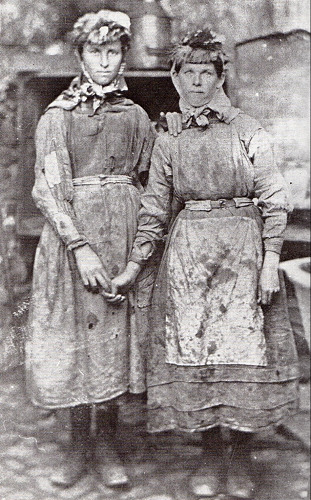
Fig. 3 - These women were referred to as "tip girls". Their job was to unload mine refuse from train cars and on to the "tip" of the mountains of mine waste. Tredegar, Wales, 1865. Photo by W. Clayton from Victorian Working Women
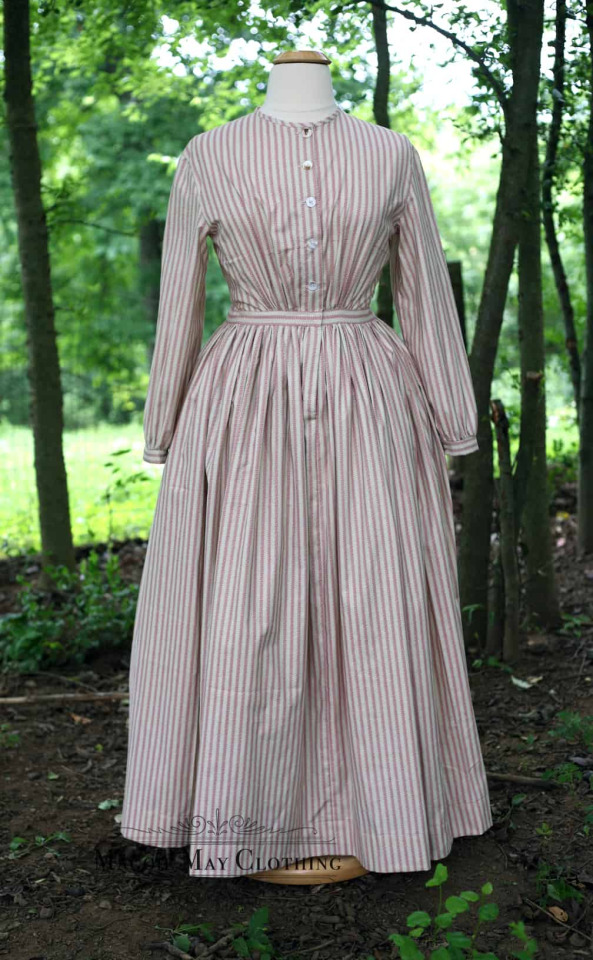
fig. 4 - This dress features a loose fitting, unlined bodice gathered gently under the bust and at the center back. The sleeves are cut moderately to encourage movement and feature a short cuff with button closure. The semi full skirt is gathered into a waistband and attached to the bodice. The skirt is hemmed to the ankle with a single turn hem. The gown closes at the center front with buttons. Shown over over a quilted petticoat and extra full petticoats. Typically worn between 1840 and 1890. This dress is a replica based on research.
Working class women in the Victorian era couldn't afford the latest fashions. They wore simple, practical clothing in a style dependent on their ooccupation. In figure 1, The woman is wearing a simple dress and cape. Her clothing looks clean because she's a washerwoman; her clothing only exposed to water and soap. Her dress is very similar to the one in figure 4.
In figure 2, the women working in the second-hand clothes shop are also performing work that isn't likely to soil their clothing. It's interesting to discover there were such shops. I always assumed poor women of this era made their own clothing.
A job such as handling coal (figure 3) was such dirty work that the clothing worn for it had to be made from thick, rough fabrics and cut loose to facilitate movement. The dirtier and more physically demanding the work, the rougher the clothing.
#fashion history#victorian era#working women#victorian work clothes#1800s women's work#victorian work dress#the resplendent outfit#victorian history#historic photographs#historic clothing#history of workers#women's history
65 notes
·
View notes
Text
When there are gaps in knowledge, the vacuum can be filled with myth, especially in reference to a woman, and an unusual woman at that.
Patricia Pierce, Jurassic Mary
60 notes
·
View notes
Text
I left a comment on the video, but I really wanted to make an infodump post about it to because I’m a spooky little autistic. The newest Ghost Files episode reminded me of one of my favorite spooky history facts that I wanted to share:
CW: Dead people in photos (nothing graphic, very peaceful, but content warning all the same)
So the photo of Joyce and Tim in the archive room, they say one of them is dead and they don’t know which, but in a lot of these “post mortem” photos, if you look closely, there’s an interesting way to tell who’s dead and who’s alive.
“In the 1800s, taking a photo of a dead body wasn’t creepy—it was comforting. In an era when photos were expensive and many people didn’t have any pictures of themselves when they were alive, post-mortem photography was a way for families to remember their deceased loved ones. This was especially true for children, whose mortality rate was much higher than it is now” (Little).

Now, back in good ol’ 1867, there was a little more to taking a photo than a button on an iPhone 13, and it could often a couple of seconds for the photo to actually be taken, in which time people would naturally sway and twitch slightly, which is why people and faces are often blurry in these old photos. It’s like when it’s dark and your phone can’t focus, and it makes you hold your phone still while it takes the shot, but no matter how hard you try, it always comes out fuzzy.

Now, I don’t know if you know this, people 9 times out of 10, dead people don’t move. So when taking these photos, they remain still for the duration of the photo process. I tried to pick some pictures that would really demonstrate this, but it’s super chilling to see just how clear dead people are in these old photos, especially when put against living counterparts.
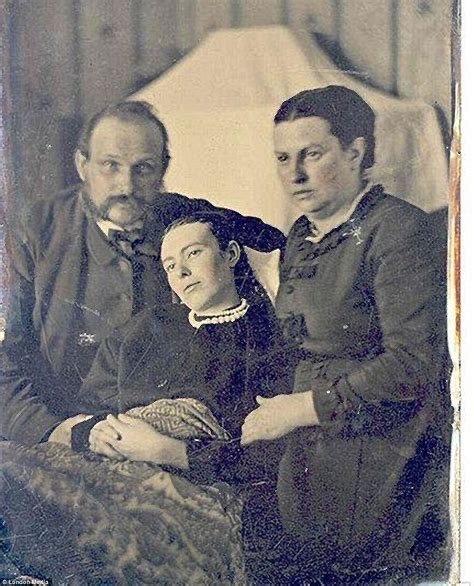
The one above is one of the clearest examples of this I could find online, but if you’re ever in the Winchester Mystery House, they have some super cool pictures hanging up that demonstrate this concept.
So Shane, Ryan, if you ever see this—well first of all I think I’d probably scream because my favorite creators saw my post—know that you can tell more than which looks “dead inside” because, hey, don’t we all?

#ghost files#watcher ghost files#watcher#we are watcher#watcher network#ryan beraga#shane medej#spooky history#spooky facts#post mortem photography#victorian history
82 notes
·
View notes
Text
Victorian Trains and Madness
The rapid rise of railway travel and the increased locomotive speeds were blamed for triggering dark desires in Victorian men, driving them to madness.
During the Victorian era, trains were suspected of an outbreak of “railway madmen” attacking fellow passengers. The new technology was thought to cause insanity (like later the radio was thought to encourage indolence). This belief persisted up until the beginning of the 20th century.
Scholars have long pointed to stories of death and disaster on the railways as proof of profound Victorian anxieties about technology.
As Professor Amy-Milne Smith wrote, “not only might you be attacked by a madman on a railway journey—you might become one.” As a result railways became associated with insanity.
[A]ccording to the more fearful Victorians, these technological achievements came at the considerable cost of mental health. As Edwin Fuller Torrey and Judy Miller wrote in The Invisible Plague: The Rise of Mental Illness from 1750 to the Present, trains were believed to “injure the brain.” In particular, the jarring motion of the train was alleged to unhinge the mind and either drive sane people mad or trigger violent outbursts from a latent “lunatic.”
Medical journals at the time were very concerned about how railway madmen could be detected when their madness might lie latent.
One “American Traveller” spoke of carrying a loaded revolver on trains in England because of the prospect of encounters with a “madman.”
The media did its part to whip up a frenzy over railway madness. One 1864 story, starkly titled “A Madman in a Railway Carriage,” gleefully related how a burly sailor became incensed, flailing around in an erratic manner first trying to climb out of the window.... A superhuman strength gripped this aggressor and four people were required to restrain him and he had to be bound to a seat.
The Victorian Belief That a Train Ride Could Cause Instant Insanity
Why Were Railways Unpopular In Victorian Times?
Shattered Minds: Madmen on the Railway
#dracula daily#< because the madness theme and technology and trains are so prominent#victorian history#19th century#dracula#historical context
69 notes
·
View notes
Text


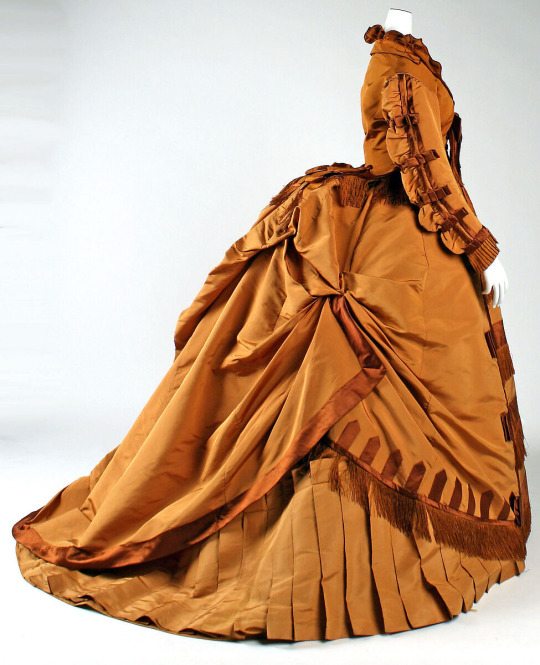
1867-1871
#historical fashion#fashion#historical#history#historical clothing#historical dress#long dress#textiles#victorian#victorian era#old fashioned#day dress#high fashion#gown#1860s fashion#1860s dress#1860s#19th century fashion#19th century#fashion dress#historical costume#historically#victorian history
32 notes
·
View notes
Text
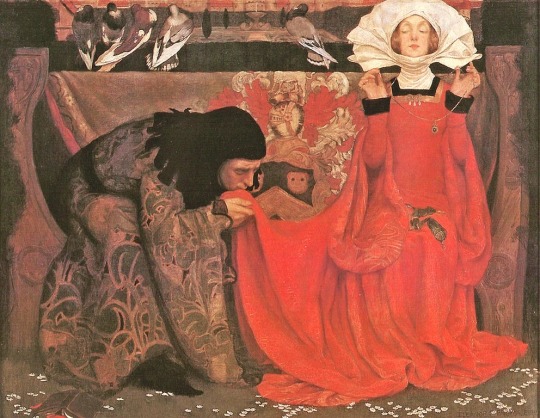
The Pale of Complexion of True Love, C. 1899
Eleanor Fortescue-Brickdale
#1890s#Victorian art#Victorian history#Victorian painting#painting#art#history#historical art#historical#Victorian#Neo Pre-RaphaeliteS#Neo-Pre-Raphaelitism
13 notes
·
View notes
Text
My sister, who got me into Dracula in the first place, has an interesting theory about Quincey Morris. Which is that, he was initially befriended by Arthur/Arthur's family as an entertainer or showman rather than just on wealth and status alone, similar to how Buffalo Bill made his fortune travelling around Europe.
In late Victorian England there were artists, writers, entrepreneurs, etc who the wealthy could give patronage to in return for greater exposure and fame. In this sense, Quincey could be an expert adventurer, who's rubbed enough elbows with the rich since adolescence that no one questions why he's there. Of course this doesn't change how he's friends with Arthur and Jack, and it gives them more of a reason to travel together and rely on his expertise.
This does explains a couple of things that leave Quincey's background vague to me. For example, Quincey's exaggerated accent when he proposed to Lucy, and in general her describing him as a storyteller. If we assume he was based off of the real Buffalo Bill, it makes sense he would know how to turn on the accent and put on a good show when necessary. It also explains why regardless of him being a storyteller, he has none to tell the rest of the Crew, because its part of his "entertainer" persona and not a real part of his personality. But being an adventurer/hunter by profession, he's still quick with a gun and knows how to hunt Dracula.
The only negative side to this theory is his age, because we know Jack groups Quincey, Arthur, and Jonathan together as "younger men". If he was making an independent name for himself he might be older. There's also his monetary support for the rest of the Crew while travelling. But then again most of the things he purchased where related to hunting and travel anyway, including the travellers typewriter he gifted Mina.
Anyway, I have no clue if Stoker had any additional notes regarding Quincey's background, but I know he was originally more of an inventor type character who wouldn't be out of place as a showman. There is definitely room to embellish Quincey's background differently if that means giving him a role in future adaptions.
#dracula (novel)#dracula daily#dracula spoilers#quincey morris#bram stoker#victorian history#1890s#thebibi on vampirez#thebibi post
444 notes
·
View notes
Text



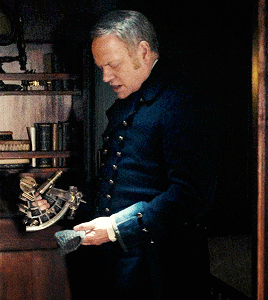
#Love A Man With A Sextant
Captain Francis Rawdon Moira Crozier was elected to become a Fellow of the Royal Astronomical Society (FRAS) in 1827, after conducting valuable astronomical and magnetic studies on his three expeditions with Sir William Parry. He was elected a Fellow of the Royal Society (FRS) in 1843, in recognition of his outstanding work on magnetism. [X]
#historyedit#naval history#francis crozier#franklin expedition#victorian history#perioddramaedit#tvedit#jaredharrisedit#jared harris#the terror#theterroredit#filmtvdaily#userfilm#cinemapix#smallscreensource#tvcentric#tvandfilm#mediagifs#filmtv#cinematv#userstream#croziergifs#gifsbywantsusdead#the man the myth the legend
73 notes
·
View notes
Text

#shitpost#shitposting#chaoscore#cryptidcore#chaotic bastard#gremlincore#crowcore#witchcore#mosscore#cryptid#weirdcore#history#image post#text convo#instagram dm#stupid shit#victorian#victorian times#victorian history
9 notes
·
View notes
Text


A Preserved Human Heart used for Anatomical Study

This preserved anatomical heart, labeled to date back to 1859, comes from the collection of Finch and Co Antiques in London. It is contained under a glass dome on an ebony base.
#༺⛧༻ 𝕮𝔞𝔫𝔢𝔰 𝖁𝔢𝔫𝔞𝔱𝔦𝔠𝔦 ༺⛧༻#༺⚿༻ 𝕾𝔱𝔬𝔯𝔦𝔞 ༺⚿༻#history#antiques#antique#victorian history#anatomy#anatomical heart#real heart#victorian#heart
135 notes
·
View notes